Results 7,041 to 7,050 of 12089
Thread: Anandtech News
-
06-02-17, 08:29 AM #7041
Anandtech: FSP Demonstrates Hydro PTM+ 1200 W: a Liquid-Cooled PSU with RGB LEDs
FSP has demonstrated an ATX power supply unit with liquid cooling at Computex. The manufacturer claims that liquid cooling ensures that the PSU stays quiet even under high loads, while its customizable RGB lighting adds style to PCs. Although PSUs with liquid cooling have been demonstrated at various industry trade shows in the past as prototypes, they have never made it to the mass market. By contrast, FSP’s unit is farther along and looks likely to make it to retail.
The FSP Hydro PTM+ PSU is rated for a 100 A maximum load and 1200 W power, in line with many air-cooled PSUs. The power supply comes in the ATX form-factor (since it looks like a commercial product and even carries the 80 Plus Platinum badge, it is also likely compliant with the ATX12V v2.31 as well as EPS12V standards) and is 220 mm long. The power supply has a modular design as well as a 140 mm fan, but unlike in the case of regular PSUs, this fan will not speed up under high loads because key components of the power supply are cooled using a waterblock plugged to a loop that also cools CPU or GPU. FSP tell us that due to liquid cooling, its PSU should remain quiet even under high loads.
The Hydro PTM+ PSU is compatible with various custom-built liquid cooling systems. In its booth at Computex the manufacturer demonstrated an open liquid-cooled PC running its PSU, but it says that the unit can be integrated into any computer with a custom LCS, except, perhaps, machines that have a cage for storage devices near the PSU. Based on the demo system created by a famous modder, as well as the PSU's customizable RGB lighting, FSP plans to offer the Hydro PTM+ primarily to the modding community looking for ultimate style.Power Specifications ( Rated @ Unknown °C ) AC INPUT 100 - 240 VAC, 50 - 60 Hz RAIL +3.3V +5V +12V +5Vsb -12V MAX OUTPUT 24A 24A 100A 3A 0,3A 120W 1200W 15W 3.6W TOTAL 1200W
Liquid cooling is usually used to remove heat from overclocked CPUs and GPUs without excessive noise. Meanwhile, overheating PSU components may generally signal of low efficiency of the power supply itself (tougher components designed for higher loads wouldn’t overheat). Nonetheless, the 80 Plus Platinum badge is supposed to tell us that efficiency of the FSP Hydro PTM+ product is rather high (albeit, at unknown temperatures). It is noteworthy that along the highlights of its product FSP also mentions something called “power overclocking technology”. Based on what the company told us, once LCS is applied, it “enables” the PSU to “handle a 1400 W output".

Technically, any PSU has a peak power output that is higher than the rated maximum output, but they can only work at peak for a short period of time. Apparently, FSP allows its PTM+ to run at 1400W for longer periods, which basically means that this is a 1400 W PSU rated for 1200 W that got its 80 Plus Platinum badge at 1200 W. How high its efficiency is at 1400 W is unknown.
FSP is still finalizing design of the Hydro PTM+ 1200 W and consequently has not announced when it might be available. The company is looking at $700 as a possible price point for the PSU, but depending how the company positions the unit, that number may go up or down. Given how special the product is, FSP may try to sell it to enthusiasts who want maximum performance and minimal noise and on that market high price tags are common. Alternatively, FSP may try to address the ultra-high end segment of the mass market PSUs and in this case it will have to slash the price and explain the end user why a liquid-cooled power supply is considerably better than a regular one.FSP Hydro PTM+ 1200 W PSU at Glance Connector type Modular ATX 24 Pin 1 EPS 4+4 Pin 2 PCI-E 6+2 Pin 4 SATA many Molex ? Floppy ? Fan 140 mm Dimensions 220 x 150 x 86 mm

Related Reading:
- FSP Dagger 500W and 600W SFX PSUs Come To Market: From $99 with 80Plus Gold
- FSP Announces Twins: 500W and 700W ATX PSU with Redundancy Capability
- The FSP Hydro G 750W Power Supply Review
- FSP Announces Twins: 500W and 700W ATX PSU with Redundancy Capability
- Thermaltake Adds RGB Lighting to Toughpower Grand Gold PSUs
More...
-
06-02-17, 08:29 AM #7042
Anandtech: The Fractal Design Celsius S24 & S36 AIO Coolers Review
In this review we are having a look at the newly released Celsius S24 and S36 AIO liquid cooling kits from Fractal Design, the Swedish manufacturer of PC components. Rather than following the industry trend of LED lighting and fancy designs, the new kits seek to combine competitive all-round performance with an elegant, understated design.
More...
-
06-02-17, 10:36 AM #7043
Anandtech: Plextor Announces M9Pe SSD: 3.1 GB/s, Marvell Controller, 64-Layer 3D TLC,
Plextor has announced its next-generation high-end SSD, the M9Pe. The new drive will use Toshiba’s 64-layer 3D TLC NAND memory and a Marvell controller, and will be available in configurations of up to 1 TB. Plextor says that it is planning to bring the drive to market by the end of this year.
When it comes to high-end SSDs Plextor has returned to its yearly update cycle, and at this Computex the company announced the successor of the M8Pe drive it launched 12 months ago: the M9Pe. Lite-On, the company behind Plextor SSDs, continued to work with Marvell and Toshiba, who supplied controllers and NAND for the previous-generation drives. For Plextor it is logical to keep the old relationship, especially given the shortage of flash memory on the market.
For the Plextor M9Pe, the manufacturer has chosen the Marvell 88SS1093 BTB2 controller as well as Toshiba’s 512 Gb BiCS 3D TLC NAND memory. The 88SS1093 BTB2 controller is equipped with three cores and features 8 NAND channels with 4 CE per channel (32 targets in total). The IC supports a Marvell’s third-generation ECC technology based on the LDPC algorithm and uses PCIe 3.0 x4 interface. Essentially the chip is an updated version of the 88SS1093 with higher frequencies and performance, which makes a lot of sense for higher-end SSDs. It is still an NVMe 1.1 IC, so do not expect any features of the latest NVMe 1.3 spec. Meanwhile, Plextor promises stable performance in sustained use cases, and this is what matters most.
Plextor will offer its M9Pe drives in 256 GB, 512 GB and 1 TB configurations. As for performance, we are looking at up to 3100 MB/s sequential read speed and around 2300 MB/s sequential write speed for the higher-end models, but as the numbers are preliminary; commercial devices might perform differently than the engineering samples the company is testing now. As for form-factors, Plextor plans to offer both an M.2 form-factor card with a radiator, as well as add-in-cards with a larger cooling system featuring RGB LEDs.
Plextor intends to bring its M9Pe drives to market by the end of the year. Pricing is something that is hard to tell today because it will depend on multiple factors, including competitive environment, and of course, where NAND prices are later this year.
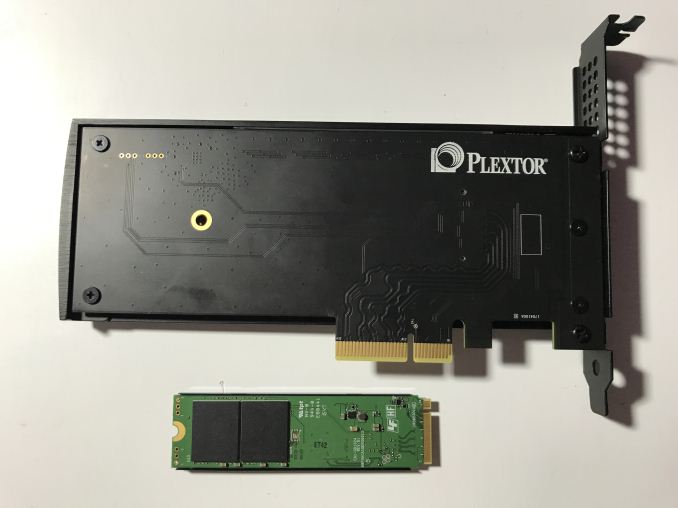
More...
-
06-02-17, 11:49 AM #7044
Anandtech: Zotac Showcases Mini GeForce GTX 1080 Ti Video Cards
Zotac, well known for its small form factor PCs, motherboards, and graphics cards, is showcasing a pair GeForce GTX 1080 Ti graphics cards at Computex. What's so special about a couple of GTX 1080 Ti GPUs? The company claimed that, at just 8.3 inches (4.5 inches shorter than the company's GTX 1080 Ti AMP Extreme), these are the world's smallest GTX 1080 Ti graphics cards. Not only is the GTX 1080 Ti ArcticStorm one of the world's smallest, but it’s also one of the lightest water-cooled video cards as well.
Zotac did not offer information pertaining to clock speeds, however it's interesting to note that both cards feature dual 8-pin power connectors, which is more than a reference-clocked 250W card would need. So it's not outside the ream of possibility that Zotac ships these cards with a factory overclock of some kind, despite their small stature.
In terms of design the GTX 1080 Ti Mini is outfitted with a custom dual fan cooler with aluminum fins and copper heatpipes for increased cooling capacity. The GTX 1080 Ti ArcticStorm Mini features a full cover water block that is compatible with an open-loop water cooling system that uses standard G1/4 type fittings. Both cards include a solid metal backplate that adds structural strength to prevent the card from bending and twisting.Zotac GeForce GTX 1080 Ti Mini Cards GTX 1080 Ti Mini GTX 1080 Ti ArcticStorm Mini Boost Clock N/A N/A Memory Clock N/A N/A VRAM 11GB 11GB TDP >250W? >250W? Length 8.3" 8.3" Width Double Slot Double Slot Cooler Type Open Air Open Loop Liquid
Finally, pricing and availability have not yet been announced.
Steven Lynch contributed to this report
More...
-
06-02-17, 01:57 PM #7045
Anandtech: Samsung Announces Notebook 9 Pro 2-in-1, Includes S Pen Stylus
One of Samsung’s unique selling points in the Android phablet market has been the company’s S Pen. The multi-feature stylus comes with Samsung’s popular Galaxy Note line of phones, as well as the company’s tablets. Now, the pen is finally making the jump from Android devices to Windows laptops.
It will be bundled with the new Samsung Notebook 9 Pro, a laptop line the company announced this week at Computex. The 2-in-1 comes in 13.3-inch and 15-inch screen sizes and is powered by an Intel Core i7-7500U CPU.
The S Pen can sense 4,000 levels of pressure and has tilt sensitivity for drawing in any position. Furthermore, as this is a passive stylus, it doesn’t require charging. Importantly however, the S Pen won’t be limited to just Samsung software, as it is compatible with Windows Ink Workspace.
The 13-inch Notebook 9 Pro comes with 8GB of RAM and the 15-inch laptop uses 16GB. Both have 256GB of SSD storage, while the 15-inch model also comes with a discrete AMD Radeon RX 540 video card. Both screens are full HD, and Samsung claims they provide viewing angles of up to 178 degrees.Samsung Notebook 9 Pro Series 13-inch 15-inch CPU Intel Core i7-7500U
(2C/4T, 2.7-3.5GHz, 4MB L3, 14nm, 15w)Display 13.3-inch 1920x1080, Touch Screen 15.0-inch 1920x1080, Touch Screen Memory 8GB DDR4 16GB DDR4 Storage 256GB SSD GPU Intel HD Graphics 620 Intel HD Graphics 620 +
AMD Radeon RX 540, 2GB GDDR5Wireless 2x2 802.11ac w/ Bluetooth 4.1 Connectivity 1 x USB 3.0 Type-C
2 x USB 3.0 Type-A
1 x HDMI
1 x 3.5mm headsetBattery 54 Wh Dimensions 310x217x16 mm 347x239x17 mm Weight 1.32 kg 1.72 kg
In addition, both Notebook 9 Pros can charge via USB Type-C, and other ports include 2 USB 3.0 ports, HDMI and a microSD card slot. The laptops also support Windows Hello for facial recognition login.
Unfortunately Samsung hasn’t revealed pricing information at this time, but it sounds like these laptops should be ready for the market sooner than later.
Andrew Freedman contributed to this report
More...
-
06-02-17, 01:57 PM #7046
Anandtech: Raijintek Announces Four New PSU Lines
Among many new products, including cases and cooling solutions, Raijintek revealed several PSU lines at Computex 2017.
Raijintek’s top PSU line is called Apella and consists of three members with 550W, 650W, and 750W capacities, featuring 80 PLUS Gold efficiency. The interesting part with those fully modular units is that they will be sold with no modular cables; only the AC power cord will be provided. Users will be able though to choose among a variety of cable kits, which seem to be of high quality, that will only cost 30 euros (around $30 for the US market) while similar cable kits for other PSUs are typically way more expensive.
This means you won’t have to pay for the standard cables, which might not be to your taste. We wonder, though, if there will be a standard and even more affordable cable kit for those users who don’t need fancy modular cables, but just want to go with the most affordable option. The 550W, 650W, and 750W Apella units will cost $90, $100, and $113, respectively, and you will have to invest another $30 for a modular cable kit.
There is also an SFX-L unit with 500W capacity, which most likely uses a High Power platform. Since there is no official name yet for this unit, its temporary model number is LSFX. The MSRP for this model will be set at $130, which sounds normal for this category. An ATX adapter bracket will also be included.
Dion CP is an affordable PSU line with 80 PLUS efficiency, covering the 550W to 650W capacity range through two models. There is also a slightly more expensive Dino EVO line which, besides higher efficiency (Bronze), also features an RGB fan. According to our sources, the MSRPs of the Dino EVO units will range from $70 to $87.
There will also be an SFX line called Helots, and will come in two flavors:300W and 400W max power, with both models having 80 PLUS Bronze efficiency. Just for reference, Helots were the lowest class people in ancient Laconia (Sparta) who were actually owned by the state and used to carry out manual labour tasks, something that allowed Spartans to practice their main hobby, which was training and preparation for war. Both members of this line will feature an ATX adapter bracket, which will render them compatible with normal ATX chassis.
Aris Mpitziopoulos contributed to this report
Gallery: Raijintek Announces Four New PSU Lines

More...
-
06-03-17, 09:11 AM #7047
Anandtech: Antec Reveals Two New PSU Lines: HCG Pro Gold & HGC Pro Bronze
After quite a long time, Antec is ready to release two new PSU lines, the HCG Pro Gold and the HCG Pro Bronze.
The HCG Pro Gold line consists of five members with capacities ranging from 550W to 1kW. Besides 80 PLUS Gold efficiency and a fully modular cable design, these units also feature a full-bridge topology on the primary side along with an LLC resonant converter for increased efficiency. On the secondary side a synchronous design is utilized along with a couple of DC-DC converters for the generation of the minor rails. We also noticed that the new Antec PSUs use magnetic fan filters, which can be easily removed for cleaning. This is a good idea, and we first noticed it in some SilverStone units. Finally, Antec will offer individually sleeved cable kits for those PSUs in several colors.
The cooling fan in the HCG Pro Gold units uses a fluid dynamic bearing, which is preferred over double ball-bearings because it’s quieter yet still offers the same (and in some cases even higher) lifetime. The only problem with FDB fans is that they aren’t so suitable for semi-passive PSUs, which frequently change from passive to active operation and vice-versa, because during the fan’s start-up phase the friction to the shaft is increased until the oil gets pumped up to the top of the bearing.
The HCG Pro Bronze line consists of only two members, with 750W and 850W max power. As the naming scheme implies, both units have 80 PLUS Bronze efficiency and at their internals only Japanese caps are used, while the cooling fan has double ball-bearings, which are highly preferred over sleeve bearings. All protection features are provided, and both PSUs have four PCIe and two EPS connectors. It is very good to see affordable, mid-capacity PSUs with a couple of EPS connectors.Antec HGC-Pro PSUs 1000 Gold 850 Gold 750 Gold 650 Gold 550 Gold 850 Bronze 750 Bronze Wattage 1000W 850W 750W 650W 550W 850W 750W Efficiency Gold Bronze Fan 135mm Fluid Dynamic Bearing 135mm Dual Ball Bearing Modular Full EPS 4+4 Pin 2 1 2 PCI-E 6+2 Pin 8 6 4 2 4
So far we don’t have information on the OEM, availability, warranty, or estimated release date of the new Antec PSUs.
Aris Mpitziopoulos contributed to this report
More...
-
06-03-17, 11:36 AM #7048
Anandtech: Zotac Unveils 2017 ZBox Magnus SFF Gaming PCs: Powered By Intel Core & AMD
Besides of course their video cards, Zotac’s other claim to fame is their variety of mini-PCs. For this year’s Computex trade show, the company did not disappoint, with the announcement of a new generation of Magnus gaming mini-PCs.
The big change for the upcoming family of Magnus boxes is that they have been revamped to make room for some of Zotac’s mini-branded video cards, including the GTX 1060 and GTX 1070. Previously, the ZBox Magnus family utilized the mobile versions of NVIDIA’s 10-series GPUs.
The new ZBox Magnus lineup consists of four different models, with two sporting Intel CPUs and two featuring AMD Ryzen processors. The company wasn’t clear on which specific AMD Ryzen chips would be utilized, but it did disclose that they would sport a 65W TDP.
Each of the two Intel ZBox Magnus offerings sport different CPUs and GPUs, with the Magnus EK51060 featuring an Intel Core i5-7300HQ and a Zotac GeForce GTX 1060 Mini. The Magnus EK71070 sports an Intel Core i7-7700HQ. Both offer support for Intel Optane memory with an M.2 2242/2260/2280 slot.Zotac ZBox Magnus (2017) Barebones PC EK51060 EK71070 ER51060 ER51070 CPU Intel Core i5-7300HQ Intel Core i7-7700HQ ? ? Video Card Zotac GeForce GTX 1060 Mini Zotac GeForce GTX 1070 Mini Zotac GeForce GTX 1060 Mini Zotac GeForce GTX 1070 Mini Memory 2x DDR4 SO-DIMM Storage 1x M.2 (PCIe & SATA) + 1x 2.5" SATA Bay Networking 2x Gigabit Ethernet +
802.11acConnectivity 4 x USB 3.0 Type-A
1 x USB 3.1 (Gen 2) Type-A
1 x USB 3.1 (Gen 2) Type-C
1 x 3.5mm headset
3-in-1 Card Reader
Over on the AMD side of the ZBox spectrum, the new Magnus ER51060 features an undisclosed AMD Ryzen CPU and a GTX 1060; the new ER51070 sports a Zotac GTX 1070 Mini. If the naming convention of each model is any indication of the hardware inside (see the Intel models), the CPUs will likely be Ryzen 5 chips.
All of the new ZBox Magnus PCs feature an M.2 slot for PCIe or SATA SSDs, a 2.5” drive bay, and support for up to 32GB (2x16GB) of DDR4-2400 SODIMM memory. There’s also four USB 3.0 ports, two USB 3.1 ports (one Type-A, one Type-C), and a 3-in-1 card reader. Network connectivity is provided by two gigabit Ethernet ports and 802.11ac WiFi. For display output, the new ZBox Magnus PCs sport the same outputs as the GPUs; three DisplayPort 1.4 interfaces, an HDMI 2.0 port, and a DVI-D connector.
Pricing and availability for the new ZBox Magnus mini PCs is still undetermined.
Derek Forrest contributed to this report
More...
-
06-03-17, 01:38 PM #7049
Anandtech: MSI Demos Prototype Hybrid Storage Card: M.2 & 2.5” SATA on a PCIe Card
Going a bit off the beaten path for this year’s Computex, MSI surprised us at the show with the prototype of a new hybrid storage array. The MSI Gaming Storage Card is all-in-one PCIe storage card that holds two M.2 NVMe SSDs and a 2.5" HDD. Like existing motherboard drive caching implementations, the idea here is to offer a SSD-cache in front of a HDD, allowing for SSD-like performance of critical data without manually allocating files/programs between the SSDs and the HDD. Except now the entire storage array is on a stand-alone PCIe x8 card.
MSI tells us to expect up to 7,200 MBps from the dual NVMe SSD array, which runs in RAID 0. Using large capacity NVMe SSDs will cache a lot of data, so only very cold data will come to the host system directly from the HDD. To ensure data protection, the card features an array of super capacitors that preserve data in flight in the event of a host power fail condition. Meanwhile the NVMe SSDs should benefit from increased airflow from the custom blower style fan used to tame thermal throttling.
MSI tells us the card will ship in MSI branded desktop systems. The company doesn't have plans to release the card as a standalone product, though it sounds like with enough consumer interest, that policy may not be set in stone. That said, we were told not to expect this anytime soon, as the card on display is only a prototype. The lead time could be as long as one year away, according to the product manager with whom we spoke.
Chris Ramseyer contributed to this report
More...
-
06-04-17, 07:15 AM #7050
Anandtech: Motorola Announces the Moto Z˛ Play
Last summer Motorola introduced its new premium Moto Z smartphone family. More than a simple redesign with the latest components stuffed inside, the Moto Zs added a modular component. Motorola’s optional Moto Mods snapped onto the phones’ flat backs with powerful magnets, making it easy to swap from a large speaker to a pico-projector to a battery pack all without requiring a reboot or any software fiddling. Among the small group of modular phones, Motorola’s solution is clearly the best, but it still comes with some compromises. The phones can feel bulky and heavy with Moto Mods attached, for example. Motorola tried to address this with the Moto Z (the middle child of the family) by making it as thin as possible (only 5.19mm thick), which limited battery size to a mere 2600 mAh.
The Moto Z Play, a mid-range model that served as the entrypoint to the Moto Z family, was a pretty solid offering, with a decent camera that produced better images than the more expensive Moto Z. The Snapdragon 625 SoC and its 8 Cortex-A53 CPUs offered acceptable performance as long as you did not push it too hard or expect too much, but the higher-performing Snapdragon 650 would have been a better choice for a phone that cost more than $400. Paring those power-sipping A53 cores (on a 14nm FinFET process) with a fairly large 3510 mAh battery did give the Moto Z Play excellent battery life.
With summer upon us once again, Motorola is refreshing its Moto Z lineup, starting with the Play. The new Moto Z² Play is not exponentially better than the previous model, however. Its progression is more piece-wise linear, remaining largely the same with only a few positive changes.
The Moto Z² Play’s biggest (potential) upgrade is the rear camera. It uses a new 12MP sensor that trades resolution for improved autofocus performance. Its 1.4µm pixels are split into two photodiodes, allowing each pixel to perform phase detection. This greatly improves AF accuracy and speed—up to twice as fast as regular PDAF. Dual-pixel PDAF is part of a hybrid AF system that also includes laser autofocus, which has an extended range up to 5 meters (16 feet) and works better in low-light situations, and contrast AF as a fallback option. The Z² Play also comes with a faster f/1.7 lens array that lets in 25% more light, which should improve image quality and help compensate for the lack of OIS.Motorola Moto Z Play Moto Z² Play Moto Z Play SoC Qualcomm Snapdragon 626
(MSM8953 Pro)
8x Cortex-A53 @ 2.2GHz
Adreno 506Qualcomm Snapdragon 625
(MSM8953)
8x Cortex-A53 @ 2.0GHz
Adreno 506 @ 650MHzDisplay 5.5-inch 1920x1080 SAMOLED
Corning Gorilla Glass5.5-inch 1920x1080 SAMOLED
Corning Gorilla GlassDimensions 156.2 x 76.2 x 5.99 mm
145 grams156.4 x 76.4 x 6.99 mm
165 gramsRAM 3GB / 4GB LPDDR3-1866 3GB LPDDR3-1866 NAND 32GB / 64GB (eMMC 5.1)
+ microSD32GB (eMMC 5.1)
+ microSDBattery 3000 mAh
non-removable3510 mAh
non-removableFront Camera 5MP, 1.4µm pixels, f/2.2, Auto HDR, dual-color LED flash 5MP, 1/4" OmniVision OV5693, 1.4µm pixels, f/2.2, Auto HDR, LED flash Rear Camera 12MP, 1.4µm pixels, f/1.7, dual-pixel PDAF + Laser AF, Auto HDR, dual-color LED flash 16MP, 1/2.4" OmniVision OV16860, 1.3µm pixels, f/2.0, PDAF + Laser AF, Auto HDR, dual-color LED flash Modem Qualcomm X9 (Integrated)
2G / 3G / 4G LTE (Category 7)Qualcomm X9 (Integrated)
2G / 3G / 4G LTE (Category 7)SIM Size NanoSIM NanoSIM Wireless 802.11a/b/g/n, BT 4.2 LE, NFC, FM, GPS/GLONASS 802.11a/b/g/n, BT 4.0 LE, NFC, GPS Connectivity USB 3.1 Type-C, 3.5mm headphone, Moto Mods connector USB Type-C, 3.5mm headphone, Moto Mods connector Launch OS Android 7.1.1 Android 6.0.1 Launch Price
(Unlocked)($499 64GB) $408 ($450)
The front-facing camera gets a small upgrade too. It still uses a 5MP sensor with 1.4µm pixels (presumably the same one as the previous Z Play) and an f/2.2 lens array; however, instead of a single LED flash (a nice feature that’s still fairly uncommon), the Z² Play’s front camera comes with a dual-color LED flash just like the rear camera that should help improve color accuracy when taking selfies in the dark.
Inside the Z² Play’s aluminum frame is a Snapdragon 626 SoC, whose only improvement over the Z Play’s S625 is a small 10% bump in peak CPU frequency that you will not be able to notice during normal use. By rushing the Z² Play to market—the original Z Play has only been available since last September—Motorola missed an opportunity to improve the user experience in a meaningful way by using the new Snapdragon 630 (which replaces the S626 in Qualcomm’s lineup) that supports the latest memory and storage standards and includes an upgraded GPU, DSP, ISP, and modem. If Motorola really wanted to blow our minds, it could have used the new Snapdragon 660, Qualcomm’s premiere mid-range SoC that provides flagship-level features and performance.
The Z² Play’s eight Cortex-A53 CPU cores and Adreno 506 GPU, which supports the OpenGL ES 3.1 and Vulkan graphics APIs, are still paired with 3GB of LPDDR3 RAM and 32GB of internal storage like the Z Play; however, there's now an optional configuration with 4GB of RAM and 64GB of storage too. This bumps the price to $500, though, which is moving into flagship territory and is pretty expensive for a phone with all A53 cores.
The rest of the Z² Play is largely the same as the previous version. It still comes with a 5.5-inch AMOLED display from Samsung with a 1920x1080 resolution. The PenTile subpixel layout means the effective pixel density is less than a 1080p LCD of the same size, resulting in some loss of sharpness.
The Snapdragon 626 SoC includes the same X9 LTE modem as the S625. It supports 2x20 MHz carrier aggregation on both the downlink and uplink, providing up to 300 Mb/s and 150 Mb/s, respectively. Other connectivity options include Bluetooth 4.2 LE, NFC, FM radio, and 802.11n Wi-Fi (sorry, no 802.11ac) with 2.4GHz and 5GHz bands.
The original Z Play’s design also survives largely intact. The back of the phone is still flat with a proprietary connector near the bottom to accommodate Motorola’s Moto Mod accessories, and there’s still a raised, circular camera module that helps anchor the Mods and Style Shells in place. The Style Shells come in a variety of colors and materials, allowing you to customize the phone’s appearance (it looks unfinished without one, which is why one is included). The small volume and power buttons sit near the top on the right side—out of the way so you do not press them accidentally—and a USB 3.1 Type-C port and 3.5mm headphone jack are on the bottom.
The biggest change around front is a larger, pill-shaped fingerprint sensor that replaces the Z Play’s rather small, square unit, which should make it easier to find and use. It also supports Motorola’s (optional) one-button navigation feature that replaces the onscreen navigation buttons with gestures; swiping left on the fingerprint sensor goes back, swiping right opens recent apps, tapping it goes home, and long-pressing it locks the phone.
It appears Motorola placed the display circuitry in the upper bezel (behind the ‘moto’ logo) like it did for the Z Play, a good design decision that keeps the lower bezel a more reasonable size. This means the upper bezel is larger than usual, but this does not negatively affect one-handed use like a big lower bezel, and it helps the front look more balanced.
Because the Z² Play fully supports Motorola’s existing Moto Mods—along with some new ones, including Style Shells with wireless charging and the Moto GamePad—it’s essentially the same size and shape. The one exception is thickness: Motorola sliced off 1mm. The thinner profile and 20 fewer grams of weight should make it feel less bulky than the Z Play.
Unfortunately, this means battery capacity also gets trimmed by nearly 15%. While the Z² Play’s battery life should still be better than average, I’m not convinced that tempering one of the Z Play’s best features is a great idea. On the flipside, you get a lighter phone that still comes with Motorola’s TurboPower fast-charging technology and the option to slap on a Style Shell with wireless charging or a 2220mAh Power Pack, although these options add to the overall price of the phone.
The Moto Z² Play will be available exclusively on Verizon in early July (without the DROID branding), but pricing is not available (the previous Moto Zs were discounted when purchased through Verizon). It will also be available unlocked directly from Motorola.com later this summer for $499 (4GB/64GB).
More...
Thread Information
Users Browsing this Thread
There are currently 10 users browsing this thread. (0 members and 10 guests)







 Quote
Quote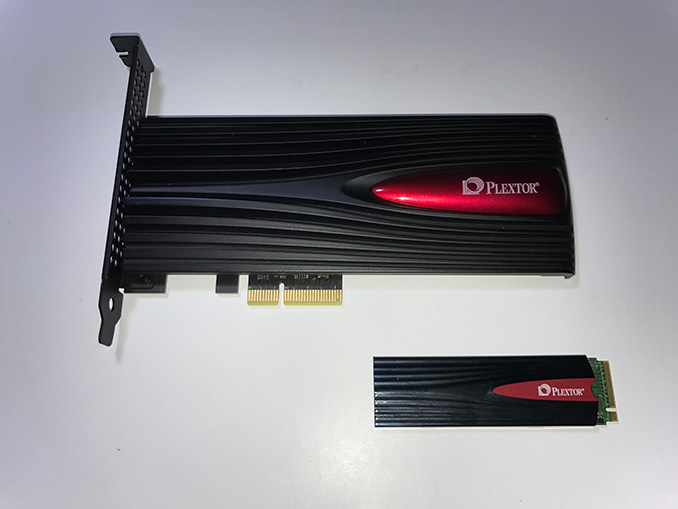

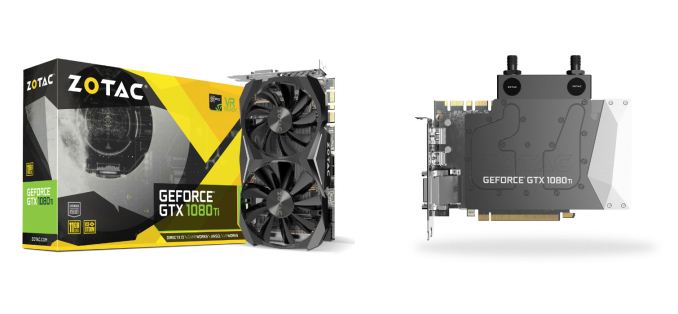
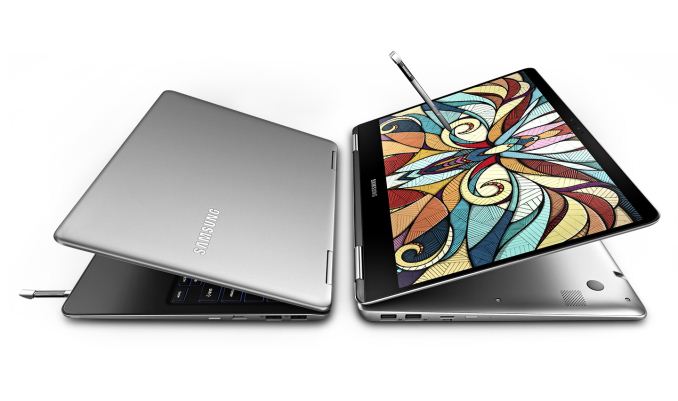


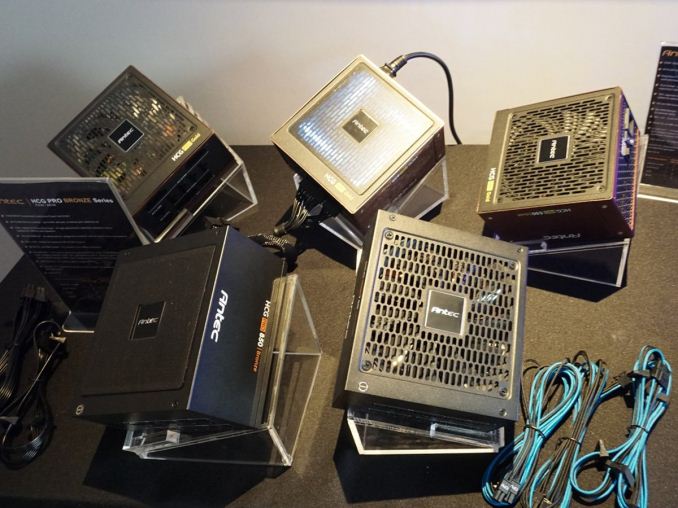




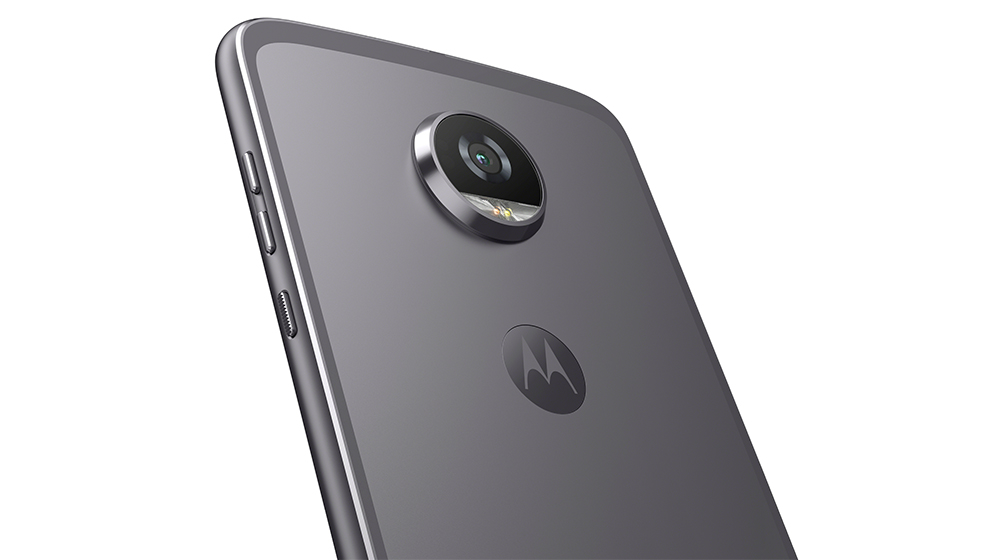

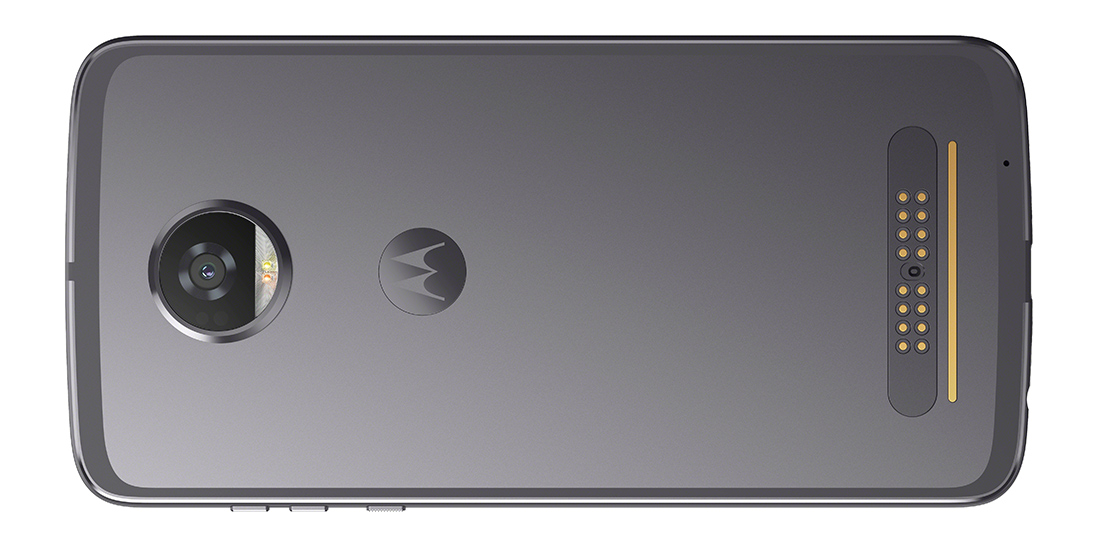
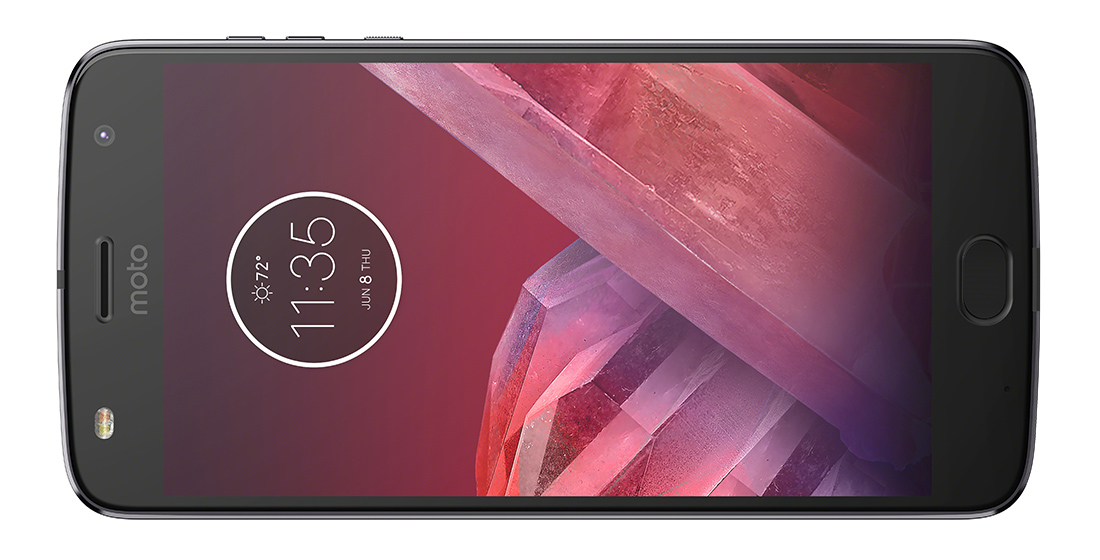
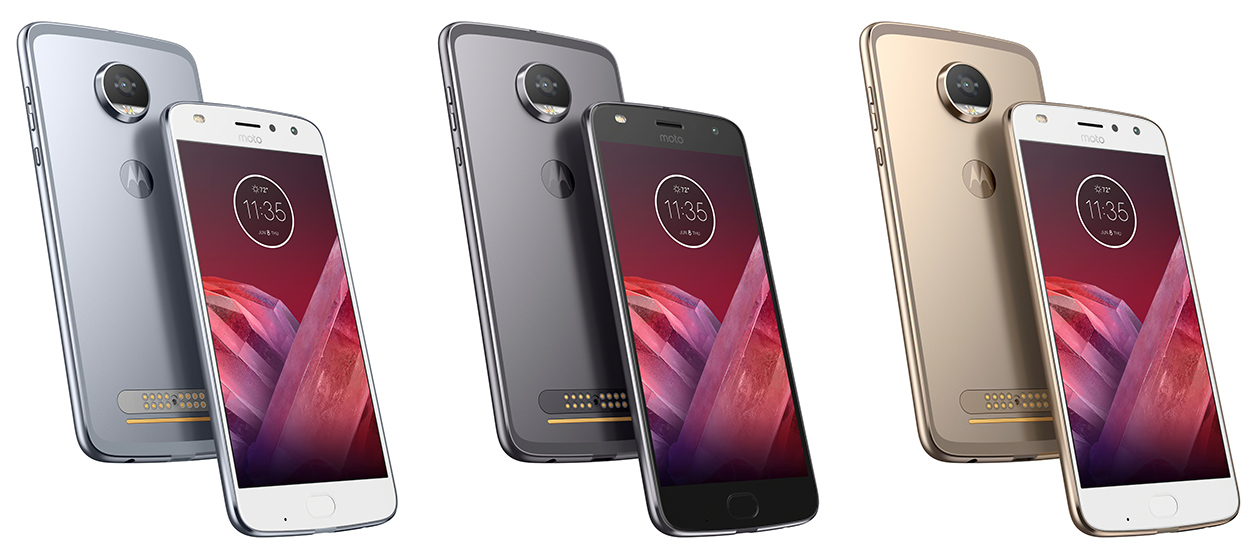
















Bookmarks